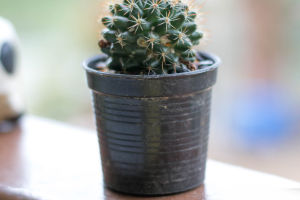Setaria viridis, commonly known as green foxtail, is a species of grass that often goes unnoticed but plays a significant role in both natural ecosystems and agricultural settings.
From its incredible adaptability to its surprising uses in agriculture and beyond, Setaria viridis is quickly becoming the unsung hero of the plant world.
Identification and Characteristics
Setaria viridis is an annual grass that typically grows to about 30 to 100 centimeters in height. It has a distinctive appearance with narrow, lance-shaped leaves and a dense, cylindrical spikelet that resembles a foxtail—hence its common name. The seed head is usually green but can turn yellowish or purplish as it matures. The plant’s stem is upright, smooth, and often branched, supporting the compact inflorescence that contains numerous small seeds.
One of the unique characteristics of Setaria viridis is its C4 photosynthetic pathway, which allows it to efficiently convert sunlight into energy even under conditions of high temperature and light intensity. This adaptation makes the plant highly resilient, enabling it to thrive in various environments, from roadsides and fields to disturbed habitats.
Ecological Significance
While Setaria viridis is often labeled as a weed, especially in agricultural settings, it plays a crucial role in the ecosystem. It serves as a pioneer species, quickly colonizing disturbed soils and preventing erosion by stabilizing the ground with its roots. This grass also provides food and habitat for various wildlife, including birds and insects, which feed on its seeds and shelter within its dense foliage.
Moreover, Setaria viridis is a valuable species in ecological studies. Due to its simple genetic makeup and short lifecycle, it is often used as a model organism in plant biology research. Scientists study Setaria viridis to better understand plant development, genetics, and responses to environmental stresses, providing insights that can be applied to improve crop resilience and productivity.
Agricultural Impact
In agricultural settings, Setaria viridis is considered a problematic weed, particularly in cereal crops like wheat, corn, and barley. Its rapid growth and prolific seed production can lead to significant competition with cultivated crops, reducing yields and complicating harvests. The plant's seeds can also contaminate grain, lowering the quality and market value of the produce.
Farmers employ various strategies to manage Setaria viridis infestations, including crop rotation, herbicide application, and mechanical removal. Despite these efforts, the plant's resilience and adaptability make it a persistent challenge in many agricultural regions.
Research and Potential Uses
Interestingly, the same characteristics that make Setaria viridis a tough weed also make it a candidate for bioenergy production. Its C4 photosynthetic pathway and rapid biomass accumulation suggest that it could be used as a source of renewable energy. Researchers are exploring the potential of cultivating Setaria viridis for biofuel production, which could provide an environmentally friendly alternative to fossil fuels.
In addition to its potential in bioenergy, Setaria viridis is also being studied for its use in phytoremediation—the process of using plants to clean up contaminated soils. The grass's ability to grow in poor, disturbed soils makes it a good candidate for absorbing and accumulating heavy metals and other pollutants, helping to restore degraded environments.
Interesting Fact: A Genetic Model
Did you know that Setaria viridis is a close relative of foxtail millet (Setaria italica), one of the oldest domesticated crops? The genetic similarities between these two species have made Setaria viridis an important model for studying the domestication and evolution of cereal crops. Insights gained from studying this humble grass have the potential to improve food security by informing the development of more resilient and productive crop varieties.
Setaria viridis may be small and often overlooked, but it is a plant of great significance. From its role in stabilizing soils and supporting wildlife to its potential in bioenergy and phytoremediation, this grass is more than just a weed. Whether in the wild, in research labs, or even as a model for improving crops, Setaria viridis continues to prove its value and versatility. Next time you spot this green foxtail along a roadside or field, take a moment to appreciate the intricate role it plays in the environment and its potential contributions to science and agriculture.


